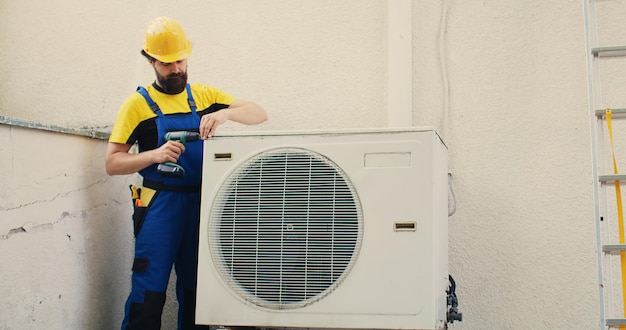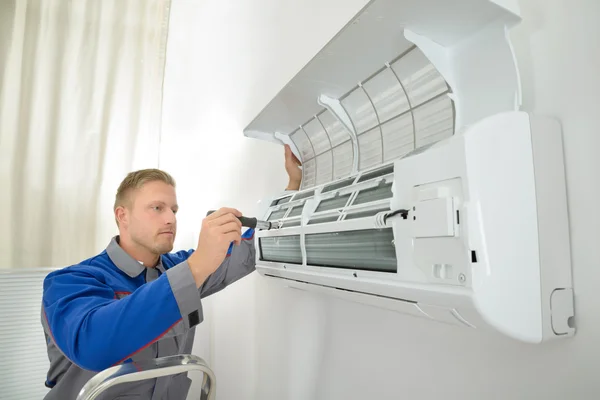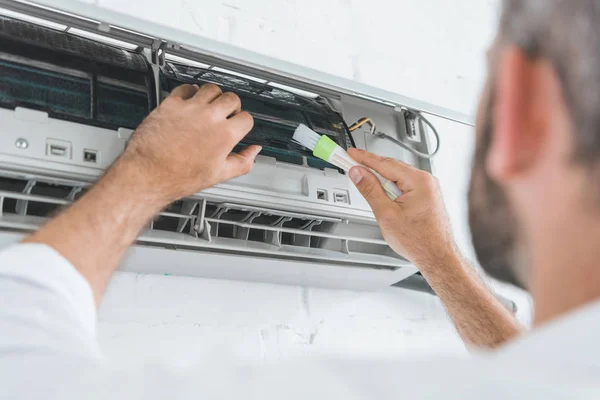Beat The Heat: Essential Guide To Effective Air Conditioner Repair
In "Beat the Heat: Essential Guide to Effective Air Conditioner Repair," we present a comprehensive manual for homeowners and businesses alike, navigating the complexities of maintaining and fixing air conditioning systems. As scorching temperatures become the norm, ensuring your AC unit functions optimally is paramount. This guide delves into the intricacies of air conditioner repair, offering insights into common issues, troubleshooting techniques, and when to seek professional help. Stay ahead of the heat waves with this indispensable resource, empowering you to tackle any cooling system challenge with confidence and ease.
Understanding How Your Air Conditioner Works
The Basics of Air Conditioning Systems
Air conditioning systems work by transferring heat from inside a building to the outdoors, effectively cooling the indoor space. This process involves a cycle of compression, condensation, expansion, and evaporation facilitated by refrigerant. Key components include the compressor, condenser, evaporator coil, expansion valve, and fan, each playing a vital role in the cooling process. Understanding these basics is essential for diagnosing and addressing air conditioner issues effectively.
Components of an Air Conditioner
Air conditioners consist of several essential components, each contributing to the cooling process. The compressor is responsible for pressurizing refrigerant, while the condenser dissipates heat. Inside, the evaporator coil absorbs heat from indoor air, while the expansion valve regulates refrigerant flow. The fan circulates air across the evaporator and condenser coils, facilitating heat transfer. Understanding the function of these components is crucial for maintaining optimal air conditioner performance.

Common Air Conditioner Problems
- Refrigerant Leaks: One of the most common issues encountered with air conditioners is refrigerant leaks. Low refrigerant levels can lead to diminished cooling performance and increased energy consumption. Detecting and repairing leaks promptly is vital to restoring your AC's efficiency.
- Dirty Air Filters: Clogged or dirty air filters restrict airflow, causing your air conditioner to work harder than necessary. This not only reduces cooling effectiveness but also increases wear and tear on the system. Regularly replacing or cleaning air filters is a simple yet effective way to maintain optimal AC performance.
- Faulty Capacitors: Capacitors play a crucial role in starting and running the motors in your air conditioner. When capacitors fail, you may notice symptoms such as the AC not turning on, irregular cooling cycles, or unusual noises. Replacing faulty capacitors can often resolve these issues and prevent further damage to the system.
- Frozen Evaporator Coils: Frozen evaporator coils are often indicative of airflow problems or refrigerant issues. When airflow is restricted or refrigerant levels are insufficient, moisture can accumulate on the coils and freeze. Thawing the coils and addressing the underlying cause is essential to prevent recurrent freezing and ensure proper cooling.
DIY Air Conditioner Repair Tips
Regular Maintenance
Regular maintenance is essential for ensuring the longevity and efficiency of your air conditioning system. Tasks such as cleaning or replacing air filters prevent airflow restrictions and improve indoor air quality. Inspecting ductwork for leaks and debris helps maintain proper airflow throughout the system. Additionally, scheduling annual tune-ups with a qualified technician can identify potential issues early and optimize system performance.
Troubleshooting Basics
When troubleshooting your air conditioner, start by checking for obvious signs of malfunction, such as unusual noises or reduced airflow. Referencing your AC's manual can provide insights into common issues and troubleshooting steps. Inspect components for damage or wear, focusing on areas like the air filter, condenser coils, and electrical connections. By systematically identifying and addressing potential problems, you can often resolve minor issues and restore your air conditioner's performance.

When to Call a Professional
While DIY repairs can address many air conditioner problems, certain issues require the expertise of a trained HVAC technician from www.professionair.com.au. If you encounter any of the following situations, it's advisable to seek professional assistance:
- Refrigerant leaks requiring recharging
- Electrical problems beyond basic troubleshooting
- Compressor or motor failure
- Complex issues with ductwork or ventilation systems
- Warranty-related repairs or replacements
Advanced Troubleshooting Techniques
Checking Refrigerant Levels
Monitoring refrigerant levels is crucial for optimal air conditioner performance. Using a refrigerant pressure gauge, assess the system's status and ensure levels are within the manufacturer's specifications. However, adding refrigerant should only be done by trained professionals to avoid overcharging or undercharging, which can lead to further issues. Regularly checking refrigerant levels helps maintain efficient cooling and prevents damage to the compressor and other components.
Inspecting Ductwork
Inspecting ductwork is essential for ensuring proper airflow and maximizing air conditioner efficiency. Look for signs of leaks, damage, or disconnected sections, particularly in areas like attics, crawl spaces, and basements. Sealing duct leaks with duct tape or mastic helps prevent energy loss and maintains consistent cooling throughout your home or building. Regular inspections of ductwork can improve indoor air quality, reduce energy costs, and prolong the lifespan of your air conditioning system.
Upgrading Your Air Conditioning System
Energy Efficiency Considerations
Considering energy efficiency is crucial when choosing or upgrading your air conditioning system. Look for units with high Seasonal Energy Efficiency Ratio (SEER) ratings and ENERGY STAR certification to minimize energy consumption and reduce utility costs. Integrating smart thermostats and automation technology enables precise temperature control and scheduling, optimizing energy usage based on occupancy and preferences. Upgrading to energy-efficient AC units not only benefits your wallet but also reduces environmental impact by lowering carbon emissions.
Smart Thermostats and Automation
Smart thermostats and automation technology offer convenience and energy savings by optimizing your air conditioning system's performance. These devices enable remote temperature control and scheduling, allowing you to adjust settings from anywhere via smartphone apps or voice commands. Features like zone control enable personalized comfort settings for different areas of your home or building, maximizing efficiency. Integrating smart thermostats and automation into your HVAC system enhances comfort, reduces energy consumption, and lowers utility costs.

